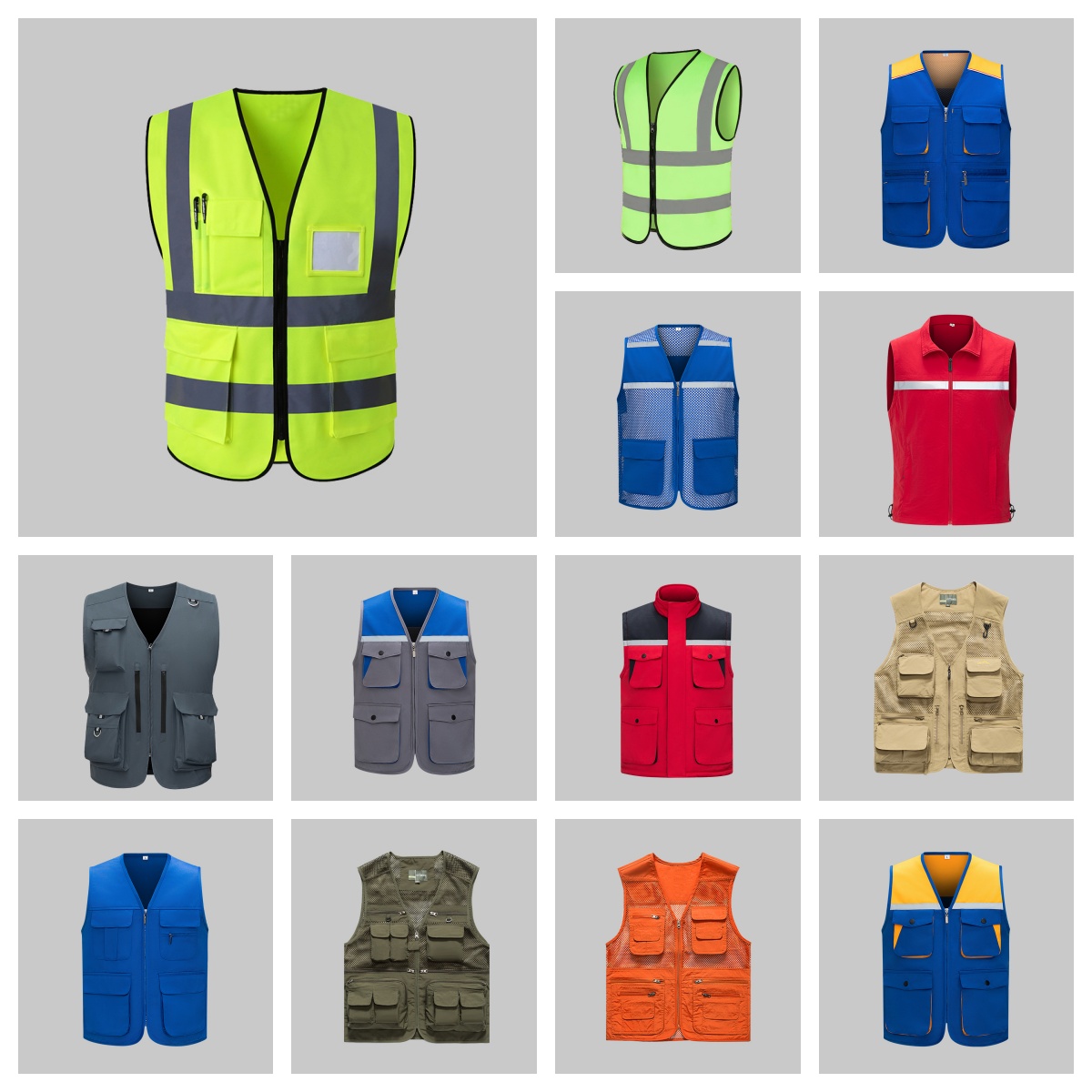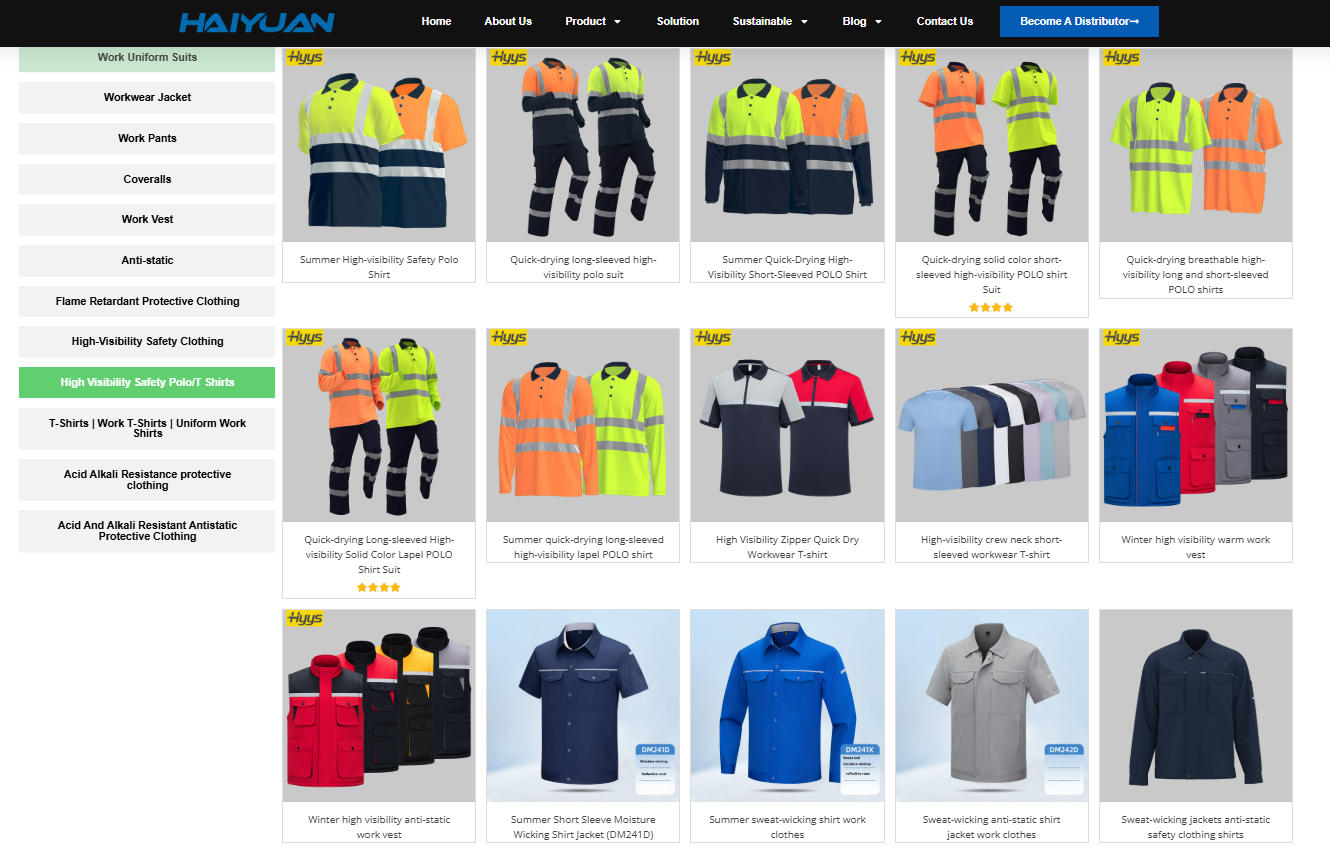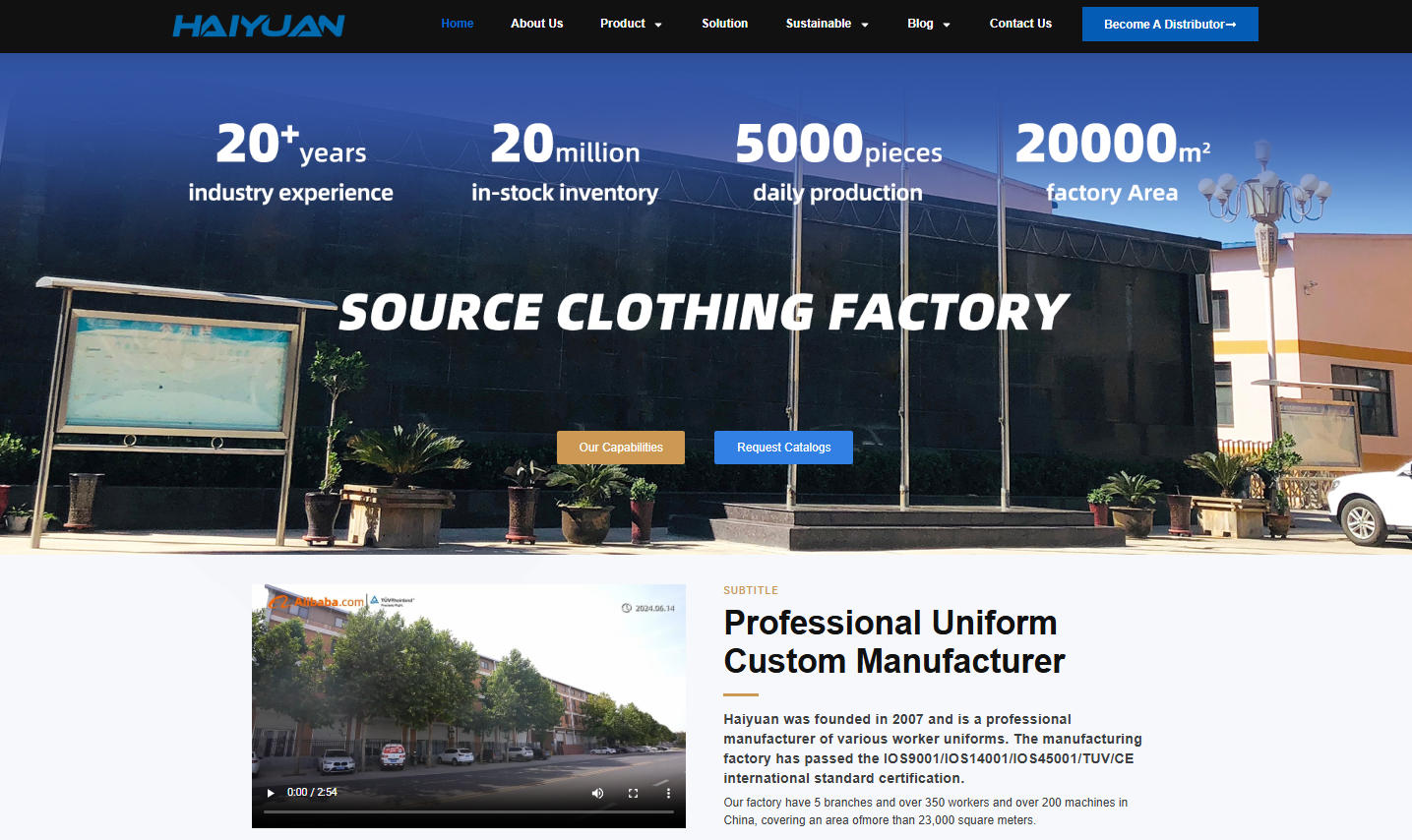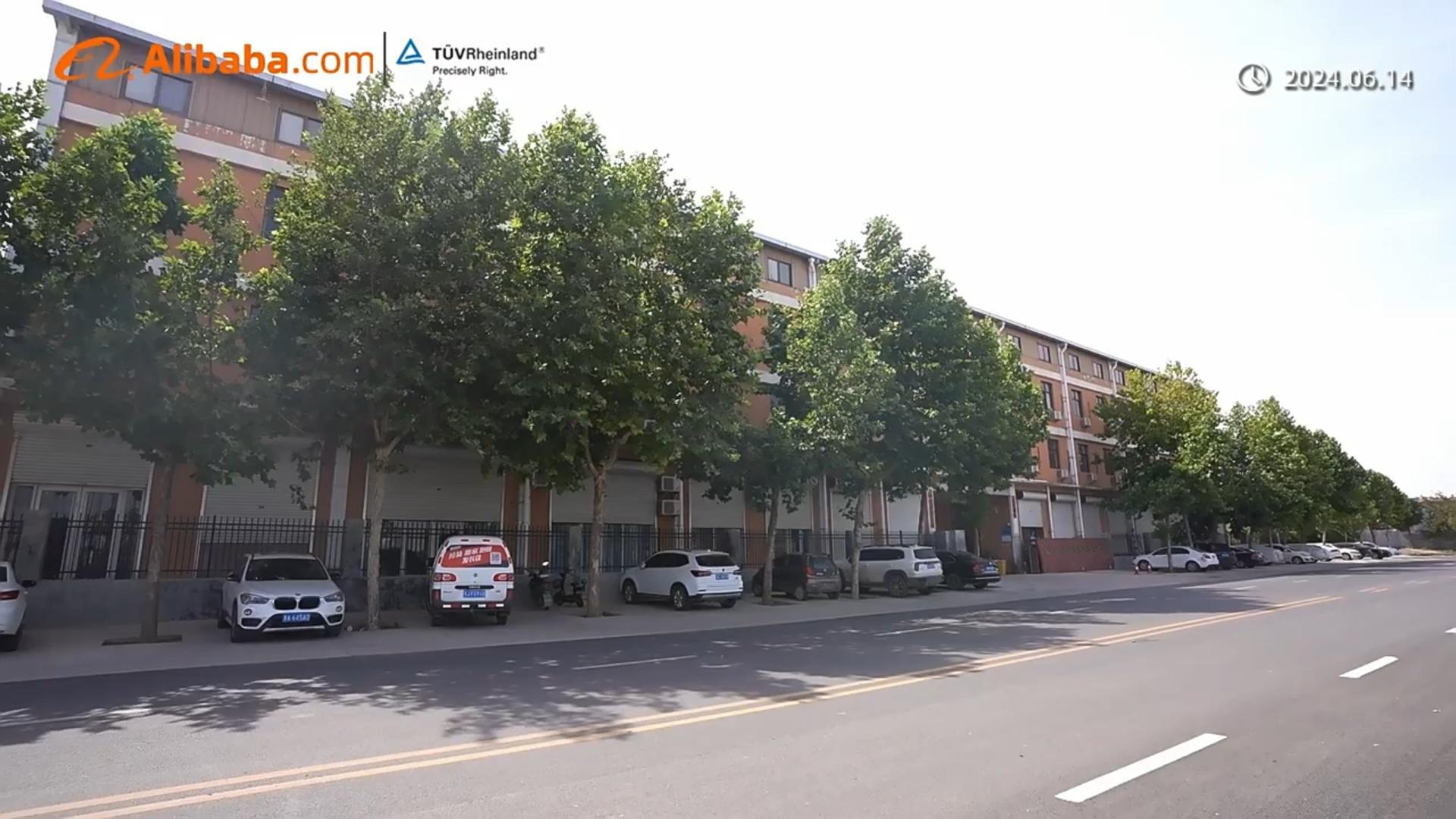Wholesale Hi-Vis workwear is a significant market with specific requirements. Here’s a comprehensive guide covering everything from key considerations and product types to finding suppliers and trends.
Key Considerations Before You Buy Wholesale
Before you start contacting suppliers, define your needs clearly.
-
Compliance & Standards: This is non-negotiable.
-
EN ISO 20471: The international standard for high-visibility clothing. It defines classes based on the minimum amount of background and retro-reflective material.

vest waist coat -
Class 1: Lowest visibility (e.g., parking attendants).
-
Class 2: Intermediate visibility (e.g., railway workers, warehouse traffic).
-
Class 3: Highest visibility for complex backgrounds and high-speed traffic (e.g., highway workers, emergency responders).
-
-
ANSI/ISEA 107: The U.S. standard. It also has Classes 1, 2, and 3, with additional Type classifications (e.g., Type R for roadways, Type O for off-road).
-
MUTCD: For road workers in the USA, garments must meet Manual on Uniform Traffic Control Devices guidelines.
-
CSA Z96: The Canadian standard.

hi vis clothes
-
-
Fabric & Performance:
-
Background Material: Typically fluorescent Polyester-Cotton (PC) or 100% Polyester. PC is more breathable and comfortable; Polyester is more durable and colorfast.
-
Base Weight: Measured in GSM (grams per square meter). A higher GSM means a heavier, more durable fabric (e.g., 250+ GSM for heavy-duty use).
-
Water Resistance/Proofness: Essential for outdoor workers. Look for PU (Polyurethane) or TPU coatings.
-
Breathability: Critical for hot environments to prevent heat stress. Meshed panels and breathable linings are key features.
-
-
Customization: Wholesale often means branding.
-
Target Audience & Use Case:
-
Construction vs. Roading: Road workers need Class 3/ANSI 3. Construction sites may require Class 2.
-
Warehouse & Logistics: Often lighter weight, Class 1 or 2 vests and t-shirts.
-
Emergency Services: Need specific features like tear-away designs, radio loops, and flame-resistant (FR) options.
-
Rail Industry: Often has its own specific color and standard requirements (e.g., orange-red).
-
Popular Types of Hi-Vis Workwear for Wholesale
| Product Type | Description | Common Use Cases |
|---|---|---|
| Vests & Suspenders | Lightweight, economical, worn over regular clothing. Easy to don and doff. | Warehouses, traffic control, event staff, short-term site visits. |
| Polo Shirts & T-Shirts | Professional appearance, good for warmer climates. Often made with breathable fabric. | Supervisors, engineers, logistics, municipal workers. |
| Softshell Jackets | Versatile 3-in-1 garments: weather-resistant outer, fleece lining, and hi-vis. Excellent for changing conditions. | All-season outdoor work, utilities, construction, forestry. |
| Waterproof Jackets & Trousers | Fully seam-sealed with PVC or TPU coating for heavy rain. Essential for all-weather protection. | Road construction, civil engineering, emergency services. |
| Winter Jackets & Insulated Gear | Quilted or padded with synthetic insulation for cold environments. | Cold storage, winter construction, outdoor work in northern climates. |
| Trousers & Shorts | Full-body compliance (when worn with a Class 3 jacket). Often feature multiple utility pockets. | Road workers, arborists, any role requiring lower-body visibility. |
| Headwear & Accessories | Beanies, caps, and bomber jackets. Enhances visibility but doesn’t usually contribute to the garment’s class rating. | Supplementary visibility, site-specific requirements (hard hat liners). |
| Flame-Resistant (FR) Hi-Vis | Made from inherently FR fabrics. Protects against both arc flash and flash fires. | Oil & gas, electrical utilities, chemical plants. |
How to Find Wholesale Suppliers
-
Direct from Manufacturers:
-
Pros: Lowest possible cost, full control over customization, ability to develop proprietary products.
-
Cons: Higher Minimum Order Quantities (MOQs), longer lead times, requires significant research.
-
How to Find: Alibaba, Made-in-China.com, or directly searching for “Hi-Vis workwear manufacturer” in countries like China, Pakistan, and Bangladesh.
-
-
Through Distributors or Master Importers:
-
Pros: Lower MOQs than manufacturers, hold inventory for faster delivery, often provide local sales and technical support.
-
Cons: Slightly higher per-unit cost than buying direct from a factory.
-
How to Find: Search for “workwear distributor,” “safety equipment supplier,” or “corporate apparel wholesaler” in your country/region.
-
-
Specialist Workwear Brands (with Wholesale Programs):
-
Pros: Strong brand recognition, high quality, excellent R&D (new fabrics/designs), comprehensive catalog.
-
Cons: Highest cost per unit.
-
Examples: Ansell, Carhartt, Dickies, Bisley, hyys®,Bulwark (for FR), Portwest, Stormline.
-
Steps to Get Started
-
Define Your Requirements: Create a spec sheet detailing garment types, sizes, required standards (e.g., EN ISO 20471 Class 2), colors, and estimated annual volumes.
-
Request Quotes (RFQ): Contact 3-5 potential suppliers with your spec sheet. Be clear you are a wholesaler/business.
-
Request Samples: Never skip this step. Evaluate the quality of fabric, stitching, reflectivity, and overall construction. Check the compliance labels are correct.
-
Negotiate: Discuss pricing based on volume, payment terms (e.g., T/T 30% deposit, 70% before shipment), and lead times.
-
Confirm Logistics: Understand who handles shipping, insurance, and import duties (Incoterms like FOB, EXW, CIF are critical).
Current Market Trends
-
Sustainability: Demand for recycled polyester hi-vis garments is growing.
-
Comfort & Fit: Move towards more ergonomic designs, athletic fits, and stretch fabrics for better mobility.
-
“Smart” Hi-Vis: Integration with technology, such as GPS trackers, wearable sensors for monitoring vitals or falls, and LED lighting.
-
Fashion-Influenced Designs: Workers want to look good and feel professional, leading to more stylish cuts and casual styles like hi-vis hoodies and softshells.
By thoroughly understanding your needs, the product landscape, and the supply chain, you can successfully source high-quality wholesale Hi-Vis workwear that meets safety standards, satisfies your customers, and builds a profitable business.




